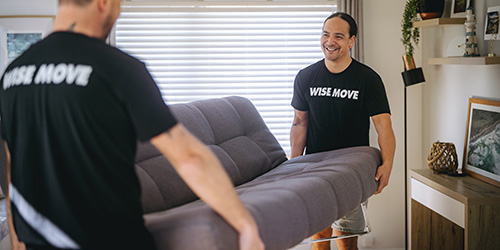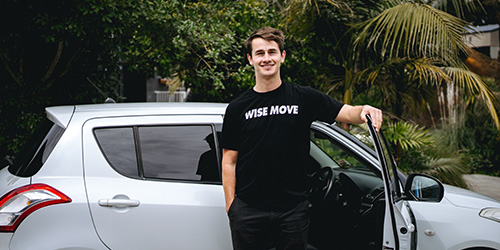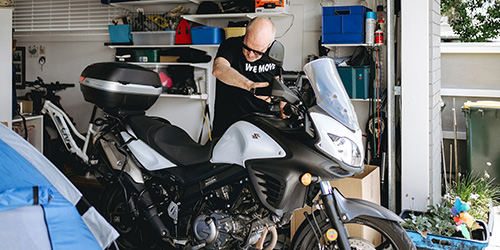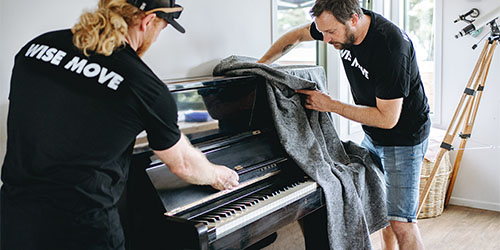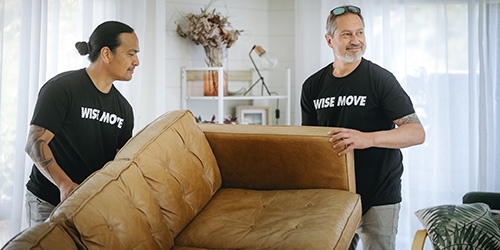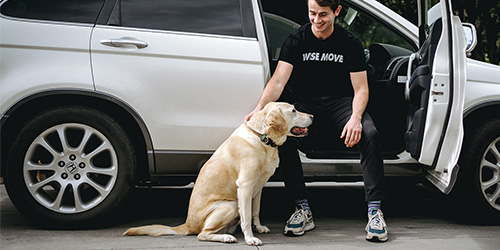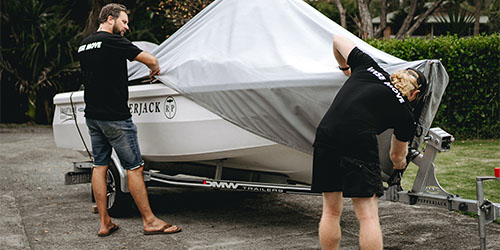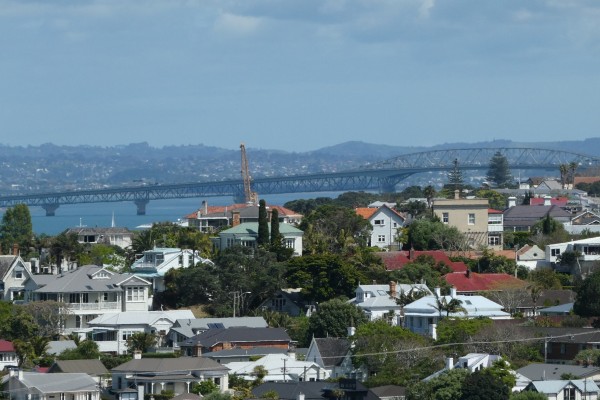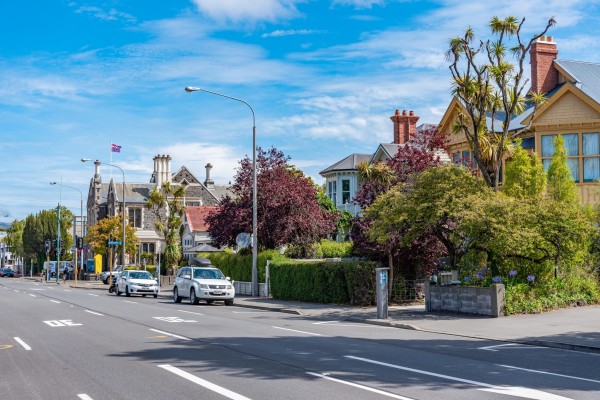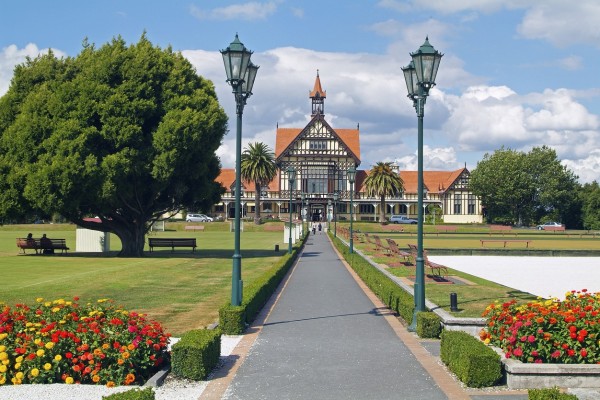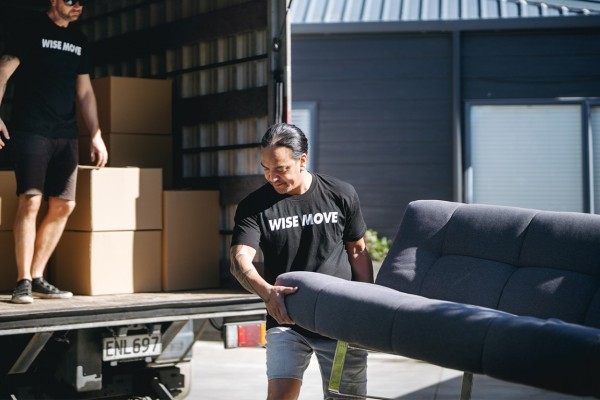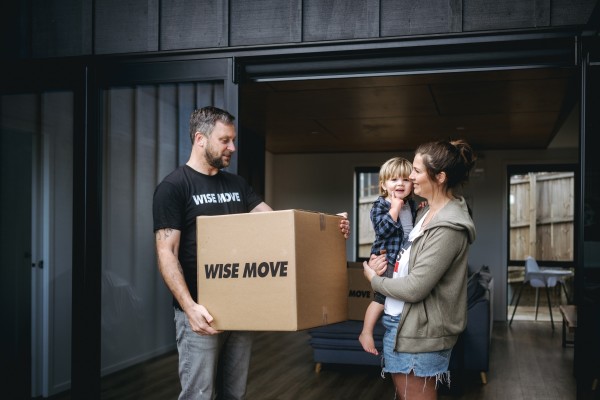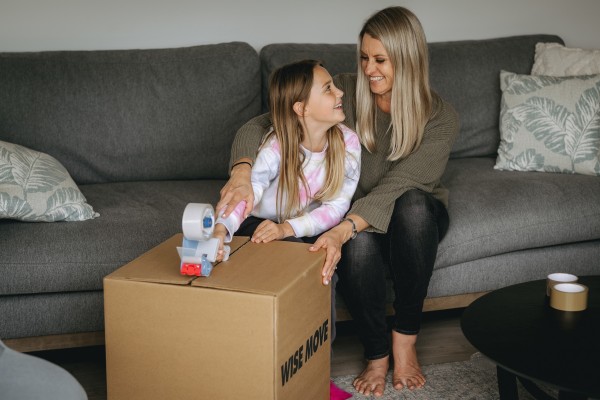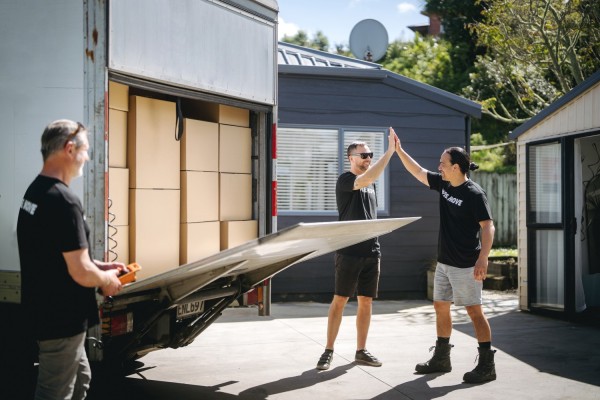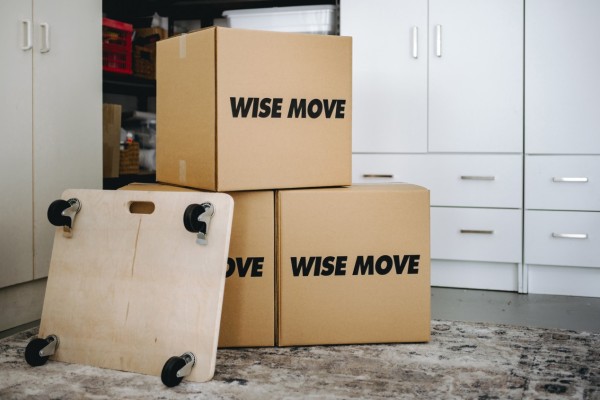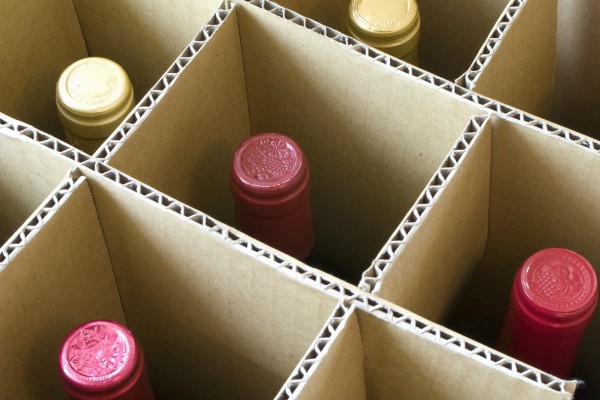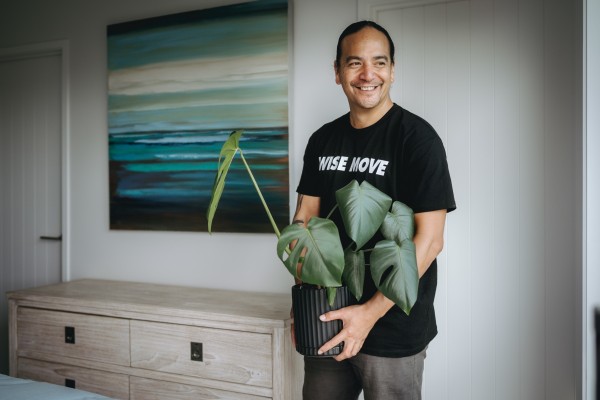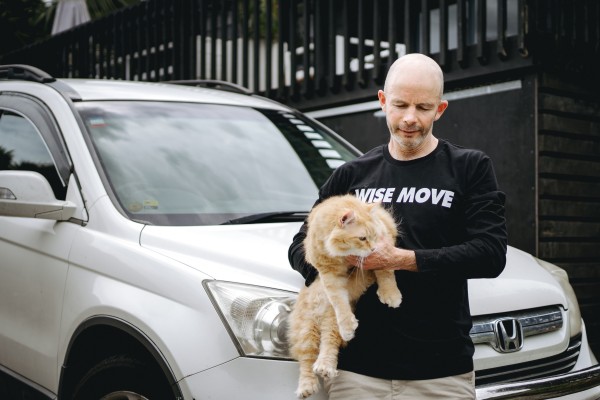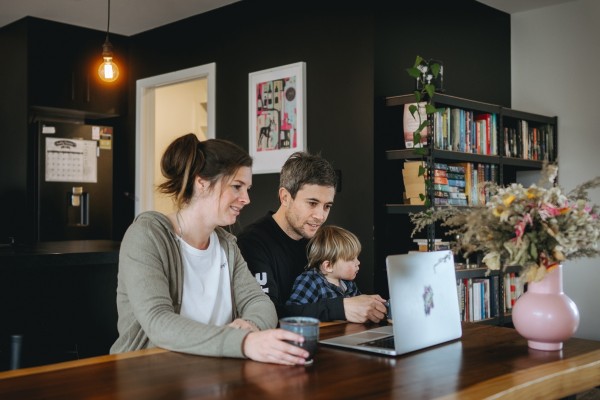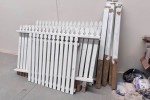Moving checklist and relocation guide for Hamilton

Hamilton has become a top choice for Kiwis seeking a city that blends affordability, job opportunities and quality of life. Whether you're moving from another part of the country or you're a local shifting to a new neighbourhood, understanding Hamilton’s housing market, transport options, and lifestyle offerings can help make your transition smoother.
This guide will tell you everything you need to know about settling into Hamilton, from choosing the right suburb to budgeting for your move.
Here’s how to make sure your Hamilton move goes seamlessly.
Introduction to moving to Hamilton
Over the past decade, Hamilton has become one of New Zealand’s fastest-growing cities. It’s transformed from a quieter regional centre into a thriving urban hub. Once considered merely a stopover on the way to other destinations, Hamilton has gained popularity as a place to live, work, and play, offering a great alternative to Auckland. Its rapid expansion has been driven by infrastructure development, economic growth, and a lifestyle that balances city amenities with a more relaxed pace.
Why move to Hamilton?
 One of the main reasons for Hamilton’s rise in popularity is its affordability compared to Auckland. As house prices in Auckland soared, many people began looking for an alternative place to live that would still provide good job opportunities, quality education, and a sense of community. Hamilton has proved to be a worthy alternative.
One of the main reasons for Hamilton’s rise in popularity is its affordability compared to Auckland. As house prices in Auckland soared, many people began looking for an alternative place to live that would still provide good job opportunities, quality education, and a sense of community. Hamilton has proved to be a worthy alternative.
Here's what you should know about moving to Hamilton:
-
Hamilton’s housing market has remained relatively accessible. It provides opportunities for first-home buyers, young families, and other professionals who may miss out in Auckland.
-
Hamilton’s economy has boomed over the last ten years, making it a great place to look for work. Once known for its strong agricultural sector, the city has expanded into technology, education, healthcare, and logistics.
-
The University of Waikato has played a key role in fostering innovation and attracting students from across the country and overseas.
-
The Waikato Expressway has improved connectivity between Hamilton and Auckland. It also makes it easier for businesses and commuters to commute.
-
The city’s infrastructure and amenities have been invested in. Developments like the Ruakura Superhub, an inland port and logistics hub, have strengthened Hamilton’s role in the national economy.
-
Shopping, dining, and entertainment options have also expanded in Hamilton. The Base and Hamilton Central are becoming lively retail and hospitality destinations.
-
Hamilton offers career and lifestyle opportunities. It also has picturesque gardens and the Waikato River, more walkways, outdoor restaurants and festivals, creating a fantastic work-life balance.
What to keep in mind when moving to Hamilton
 While there are many advantages to moving to Hamilton, there are some things you should be aware of before you plan your move.
While there are many advantages to moving to Hamilton, there are some things you should be aware of before you plan your move.
Competitive housing market
Fast population growth can have a downside. Suburbs such as Rototuna, Flagstaff, and Huntington are in high demand, making it difficult to find a home that suits your budget.
Traffic and roadworks delays
Infrastructure expansion is also causing roadworks. This can slow down moving times and create bottlenecks, especially in areas like Peacocke and Chartwell.
High demand for movers
Because of the high volume of people moving within and into Hamilton, professional movers and rental trucks can book out quickly, especially during holidays.
Weather-related moving challenges
Hamilton’s damp climate and frequent winter rain can make moving tricky, with wet conditions increasing the risk of damage to furniture.
Limited public transport options
Hamilton’s bus network is not as extensive as larger cities such as Auckland and Wellington. Owning a car is more necessary as the city does not have a commuter train service that connects different parts of the city.
High demand for rentals
The rental market has become competitive. Finding affordable accommodation serviced by public transport is more difficult now than it used to be, particularly for students.
Urban sprawl and suburban isolation
The city has expanded outward, and newer developments on the outskirts can feel disconnected from central Hamilton, with limited amenities and longer commutes.
Hamilton moving house checklist
Moving in Hamilton can be a logistical challenge, involving many moving parts. To help everything run smoothly, we’ve put together a Hamilton-specific moving checklist.
10+ weeks before the move
-
Start looking for a rental property a few months before the end of your lease. You’ll need enough time to apply for rentals and find one that suits you. Keep in mind, you may have to apply for a few properties before you are accepted.
-
Set a moving budget to help you stay on track with your expenses. This guide covers the costs of moving companies, packing materials and cleaning further down.
-
If you know your moving date already, book your moving company as soon as possible. Booking early means you’ll have the first pick of the date you want to move.
-
Look for storage options. Likewise, if you need to hire storage for a few weeks or months, get this sorted early.
-
Start decluttering. It can take time to go through your home and get rid of unwanted items. Start early so that you can move on to boxing up the items you would like to keep.
-
Create a packing plan. Breaking down the packing process into manageable parts makes things move faster and reduces your stress levels later in the moving process.
6+ weeks before the move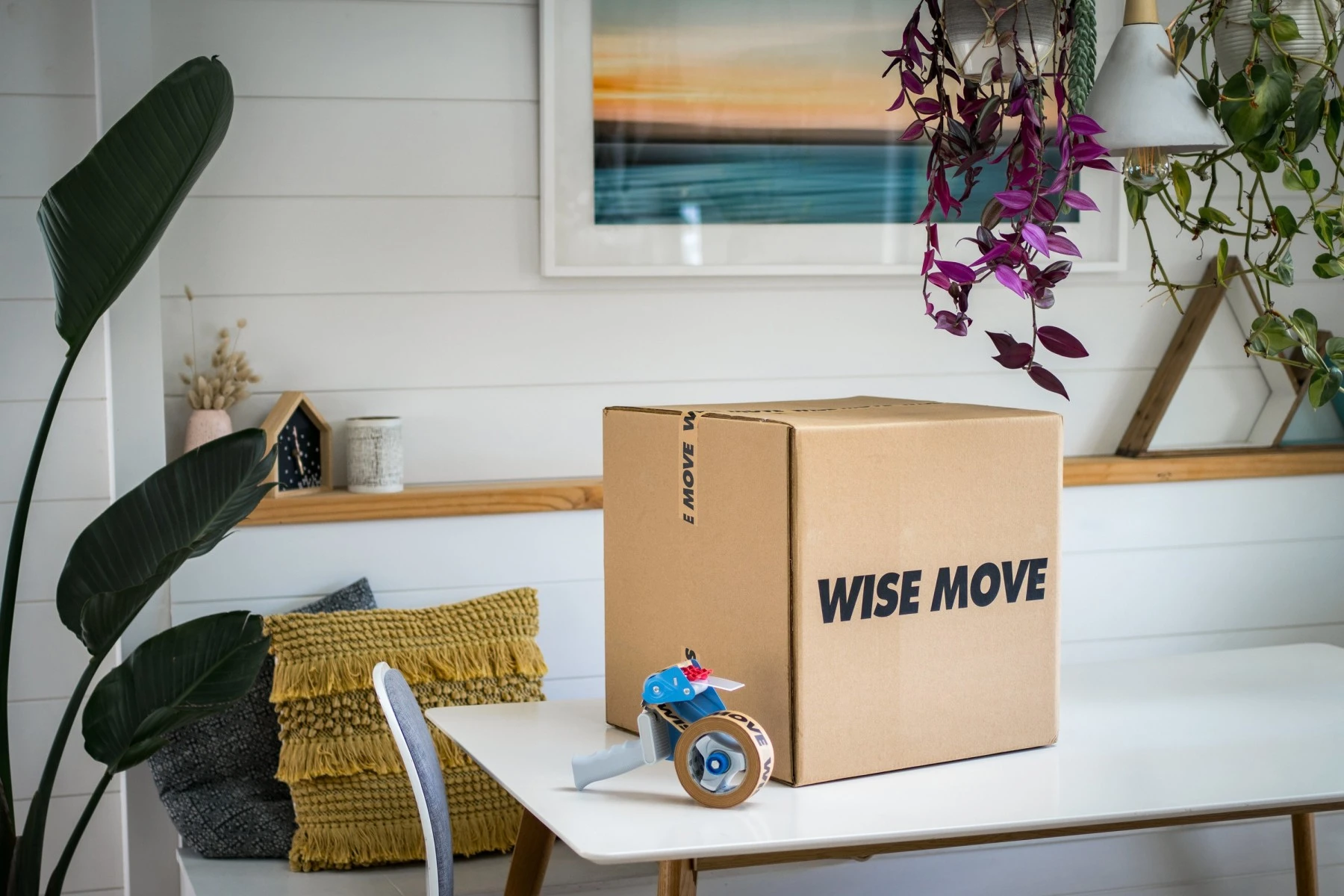
-
Start packing your non-essential items. Go around your home and pack anything you don’t need between now and moving day. This includes sports equipment, seasonal clothing and spare bedrooms.
-
Organise all your packing materials. Buy tape, boxes and bubble wrap ahead of time so you have everything you need to start packing.
-
Make a plan for speciality items. Plan how you will move items such as pianos or large pieces of artwork. You might need to protect them with speciality boxes and hire professional movers with the expertise to handle bulky items.
4+ weeks before the move
-
Confirm all the details with your movers. Make sure your moving team know how to get to the house and that you know what date and time they will arrive.
-
Book your cleaning service early if you’re using a professional, so you don’t lose any time between the move and when you need to hand over your keys.
-
Arrange child or pet care. If you have pets or young children, make arrangements with family, friends or a professional service for their care on moving day.
2+ weeks before the move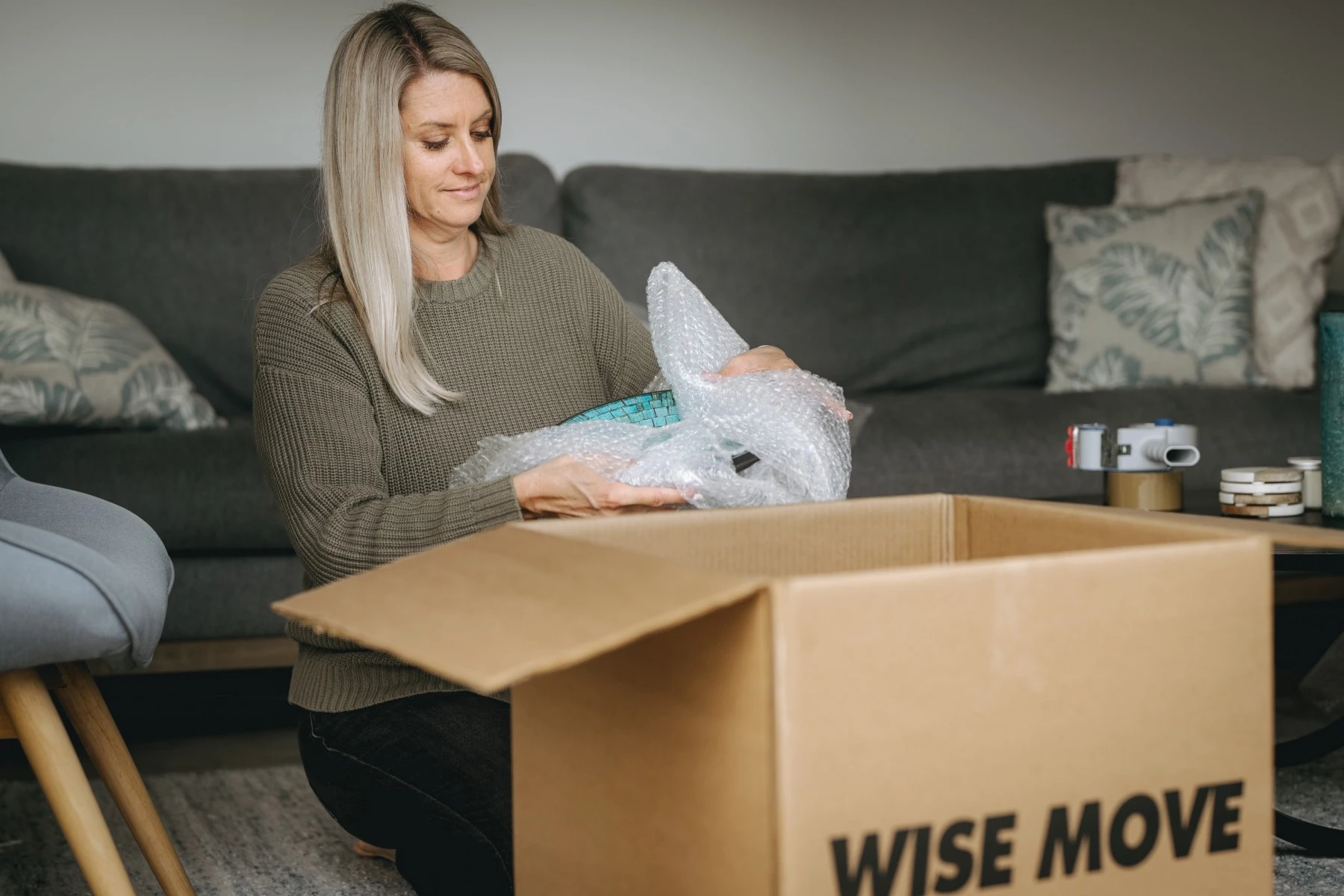
-
Keep packing up each room of the house, leaving just the kitchen and bathroom until last. Label all of your boxes.
-
Put together an essentials box. This should include items you’ll need to use straight away.
-
Update your local details and new address with your bank, utilities or electoral roll information.
1+ week before the move
-
Check in with your movers. Pick up the keys to your new house and check the arrival time of your movers.
-
Clean your old home. Once everything is packed, do a final clean.
-
Prepare an emergency kit. Pack a bag with all your essential items such as documents, toiletries, food, and chargers for moving day.
-
Prepare a care bag for your child or any pets to hand over to their carer for the day.
Moving day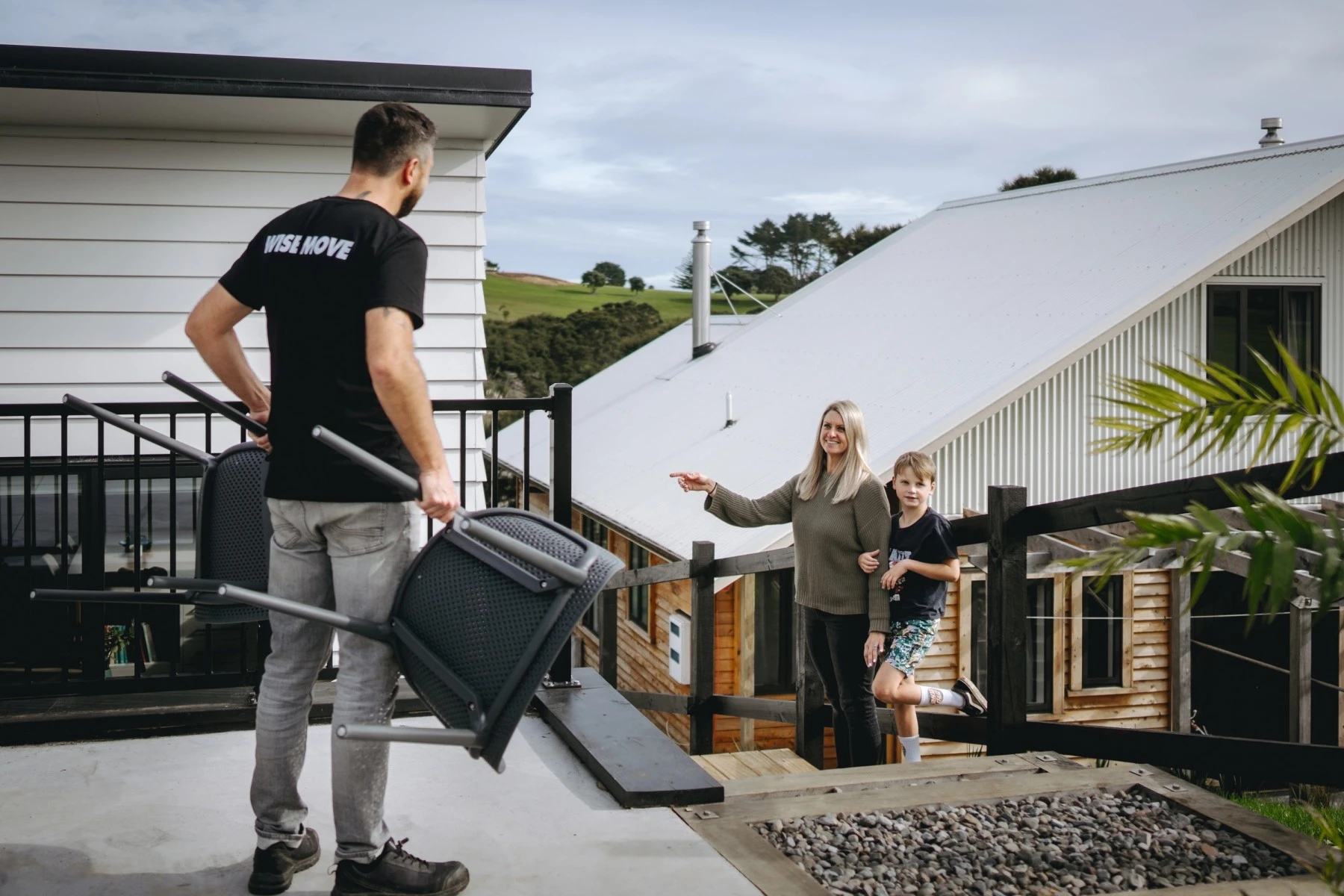
-
Do a final walkthrough and check cupboards or high shelves for any forgotten items.
-
Check utilities and confirm that your power and gas are running at your new home.
-
Start unpacking the rooms you'll use the most, like kitchens, bathrooms and bedrooms.
Budgeting for your Hamilton move
Moving companies’ fees vary depending on various factors such as the size of your home, the location you are moving to and from, and whether you have stairs or a tricky accessway.
You can expect movers for a smaller one-bedroom apartment to cost around NZ$360. Movers for a larger 4-bedroom home are around NZ$3,150.
If you’re selling your home, budget for additional costs like marketing, legal and agent fees. Home buyers will need to factor in building and LIM reports and any whiteware you may have to purchase, especially if you’re moving out of a rental.
If you’re renting, you might want to factor in the cost of professional cleaners (or at least cleaning products), bond and rent in advance.
Hiring vs. DIY moving. What’s best for your Hamilton move?
 There are lots of factors to consider when it comes to your Hamilton move. Will you do it yourself or hire a professional to help? The right choice usually comes down to time, money and effort. To help you make the right decision for your move, we’ve broken down some of the aspects you should consider:
There are lots of factors to consider when it comes to your Hamilton move. Will you do it yourself or hire a professional to help? The right choice usually comes down to time, money and effort. To help you make the right decision for your move, we’ve broken down some of the aspects you should consider:
Why hire professional Hamilton movers?
Pros
-
Efficiency: It’s much faster than doing it yourself. Professionals move quickly and know exactly which items should be moved first for an efficient move.
-
Less stress: All you need to do is meet your movers at the start and end of your move. They take care of everything else.
-
Expert handling: You don’t need to worry about how to carry your bulky couch or fridge safely out of the house. Your professionals know all the tricks of the trade.
-
Insurance: Many professional movers include insurance in their quote, giving you peace of mind that your items are protected.
Cons
-
Price: Hiring professional movers is the more expensive option.
-
Extra fees: You’ll also pay more for larger homes with more items, houses with stairs or difficult accessways
Why do you move yourself?
Pros
-
Save money: Moving on your own is cheaper. You may have to pay for a hire van or trailer, which can be pretty cheap if you don’t have much to move.
-
Control: You can move at your own pace, whether you do it a few things at a time or all in one go.
Cons
-
Time and effort: Doing it yourself takes a lot longer and is physically harder on your body.
-
Risk of injury: If you have previous injuries, especially to your back or knees, lifting heavy or bulky items could put you at risk of further injury.
-
Possible damage: Years of experience and moving knowledge go into packing up and moving your things safely. Without professional help, you run a very real risk of damage to your items.
If you’re thinking of hiring professional movers, it’s a good idea to compare quotes from multiple Hamilton movers. Wise Move makes getting quotes from multiple moving companies easy.
Organising and decluttering before moving
 Decluttering is a great way to save money and time on moving day. Whether you’re moving with the help of a professional or doing it yourself, organising and decluttering your home now will save you time and stress later on. Here’s how to organise your Hamilton move:
Decluttering is a great way to save money and time on moving day. Whether you’re moving with the help of a professional or doing it yourself, organising and decluttering your home now will save you time and stress later on. Here’s how to organise your Hamilton move:
-
Start a packing schedule.
-
Sort your items for packing.
-
Throw, donate or sell unwanted items.
-
Organise your paperwork.
-
Collect materials and supplies.
For a typical 3-bedroom Hamilton move, you’ll need to buy or borrow a range of packing supplies. If you’ve got an upcoming move, it's a good idea to collect boxes and packing supplies over a few weeks.
Boxes
-
15-20 Small boxes: Use these for small items like books, glasses and knick-knacks.
-
15-20 Medium boxes: Use these for storing clothing, appliances and decor.
-
5-10 Large boxes: Use these for bedding, blankets and artwork.
-
2-3 Wardrobe boxes: Use these for hanging suits, dresses and formal clothing.
Where to find them
You can buy new boxes from Bunnings, OfficeWorks or Warehouse Stationery. If you’re on a budget, you can borrow boxes from friends, pick up used cardboard boxes from local businesses or search Facebook Marketplace.
Stationery
-
6-8 Rolls of tape: Use packing tape for sealing boxes properly.
-
Scissors: One or two pairs are great, especially if several people are helping you pack and move.
-
Box cutters: These are great for removing old tape from boxes.
-
Tape dispenser: These make light work of dispensing and cutting your packing tape.
Where to find them
You can find these supplies at any stationery or hardware store. Check out Bunnings, Officeworks, or Warehouse Stationery.
Bubble wrap and packing paper
-
1-2 Rolls of bubble wrap: Use this for glasses, plates and fragile items.
-
2-3 Packs of packing paper: You can place this in between each tape, scrunch it up for extra padding within each box or for wrapping plates and glasses.
Where to find it
You’ll find this at Bunnings, Officeworks, or Warehouse Stationery. You can also order this online from any of these stores.
Furniture pads or blankets
-
5-8 moving blankets: Use these to protect wooden furniture and appliances
Where to get them
You can rent furniture pads from your Hamilton movers during your move. Alternatively, use old blankets and duvets that you might have in storage.
Plastic bins (optional)
-
2-3 plastic bins: Use these items like toys, blankets, linens, or small household goods.
Where to find them
Plastic bins are ideal for transporting small or bulky items. They are also great storage items and can easily be stacked in a garage or shed after your move.
Your room-by-room packing guide
Breaking down your home move into room-by-room tasks makes packing feel less daunting. It’s faster, too.
Once you’ve finished packing one room, you can also give it a clean. While you won’t be able to do this for rooms like the kitchen and bathroom, it helps reduce the amount of cleaning you’ll need to do after your move.
Start packing the areas of your home that you use the least. These rooms often hold items and furniture you won’t need to use during the week of your move.
Start with spaces like your:
-
Guest bedrooms
-
Offices
-
Garden sheds
-
Rumpus rooms
-
Basements
Once you’re done with these, you can start packing up smaller non-essential items in the rooms you are using, such as bedrooms, kitchens and bathrooms. Once you get closer to moving day, you can focus on packing these rooms.
Here’s a quick guide on how to get started.
Garden, shed, garage and storage areas

Garden sheds and garages are famous for becoming dumping grounds for broken or duplicate items.
-
Start by sorting through the tools and equipment in your shed and getting rid of anything you haven’t used in the past year or two.
-
Pack small tools and items into small boxes. This will stop the box from getting too heavy and breaking. You can also make use of any toolboxes or plastic tubs for this job.
-
Outdoor furniture can be broken down and placed in boxes. If you can’t dismantle it, you can use blankets or cushions to protect these items during your move.
-
Large items such as garden pots should be stored in heavy-duty boxes or tubs. You may also want to use a trolley to transport these on moving day.
Guest bedrooms
-
Pack duvets and blankets into large boxes or plastic bins and label them.
-
You can dismantle any furniture and place screws and bolts into small ziplock bags.
Office
-
Sort through any paper documents and get rid of anything you don’t need.
-
Pack electronics into their original boxes if you have them, or use bubble wrap to keep moving parts protected.
-
Dismantle any furniture. You can keep small items in the drawers, just tape them shut so they don’t slide open during your move.
Living and dining rooms
-
Use the original boxes for any electronics if you still have them. It’s a good idea to buy a TV box if you don’t have one, especially for large flat screens, as these are large but fragile.
-
Use bubble wrap or blankets to wrap them securely.
-
Disassemble any furniture and use moving blankets to prevent scratches in the wood or finishing.
-
Pack books and decor into small boxes. Use cushions and throws in between for extra protection.
Bedrooms

-
Pack and store your clothes in suitcases or plastic bins
-
Wardrobe boxes are great for formal wear or attire that needs extra protection, such as suits or evening dresses.
-
Pack bedding into large bins or boxes and label them.
-
Disassemble any large pieces of furniture if you can, and keep the screws and bolts in a ziplock bag.
-
Pack electronics, books and decor into smaller boxes.
Bathrooms
-
Start by decluttering any old bottles or expired items.
-
Pack what you need into small boxes, putting open items into ziplock bags to avoid leaks. Leave out anything you need on moving day (like toothbrushes and skincare) and pack it into a makeup bag.
-
Wrap fragile items, like mirrors, in bubble wrap.
-
Use towels and linens to protect items, or roll them up and store them in a plastic tub.
Kitchen

-
Start by throwing away expired food or items you don’t use or need.
-
Storing food in plastic tubs is a great way to keep food sealed and prevent insects from getting into it during your move.
-
Wrap dishes and glasses in bubble wrap and place them in small boxes. Use dividers to keep your wine glasses separate.
-
If you still have the original boxes, pack your appliances back into them. Otherwise, you can wrap them in bubble wrap and pack them in a medium-sized box.
Cleaning your home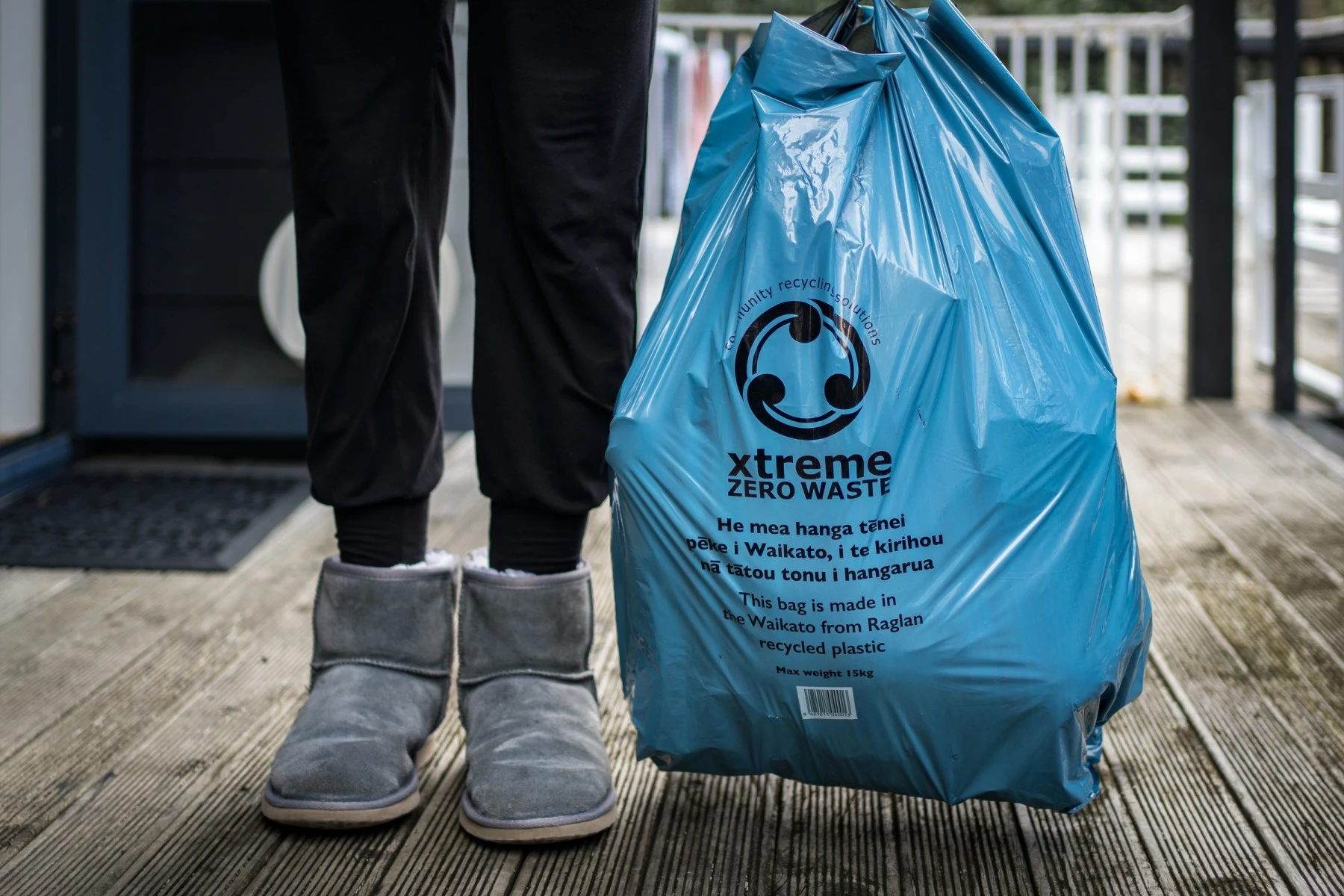
Whether you're selling your home or moving out of a rental, cleaning it from top to bottom is an important step. You can begin cleaning each room once you finish packing it. This will save you more time on moving day. Here’s where to start.
Start high, finish low
In all rooms, start with cleaning tasks on the ceiling and then work your way down to the ground. This way, you’ll be able to catch any fallen dust from above with the final sweep or vacuum.
For example, start by dusting lighting fixtures and vents and removing cobwebs from the corners of the ceiling. Then wipe the walls and finally tackle the floors.
Scrub all surfaces in the kitchen
When cleaning the kitchen, move any appliances, like ovens, fridge and microwaves, out of the way so you can clean the floor or bench under them. Clean the tops of shelves and cabinets. Yes, even the top of ones you think no one will see.
Make the bathroom sparkle
Scrub your bathroom from head to toe. Pay attention to places like the shower tiles, grout, and plug holes. If you have an over-shower bath, clean the removable water sealant that fits onto the bottom of the glass screen.
Vacuum and mop the floors
Wait until all the furniture has been removed from each room, then vacuum, dust and mop the floors. Don’t forget the skirting boards as these can get very dusty.
Check the carpets
You may need to hire a rug doctor if you have stains on the carpet, particularly if these were covered up by a rug or furniture when you sold the house. If you’re a renter, your property manager or landlord can’t make you clean the carpets, but you could lose money off your bond for any stains you’ve caused.
Dispose of all rubbish
Do a final walk-through of your home to check that you’ve gathered all your rubbish, broken furniture and recycling.
Hamilton storage and associated costs
Moving can cause all sorts of logistical problems. It’s not always possible to move from one home straight into another. If you have a gap between houses while you wait for one to sell or are simply downsizing and need time to get rid of your stuff, you might need a temporary storage solution.
Storage costs in Hamilton will vary based on how much stuff you have and the location of your unit.
Medium-sized units cost around NZ$300 per month.
Easy Storage
-
Situated at 59 Sunshine Ave, Te Rapa, Easy Storage offers 24/7 access to a range of unit sizes starting from NZ$65 per month.
-
Unit sizes range from 1x1.5 meters to 6x5 metres, perfect for accommodating everything from small furniture to the contents of a large 4-5 bedroom house.
-
Easy Storage offer individual security monitoring, electric security fencing, CCTV surveillance, and computer-controlled gate access.
Hamilton Self Storage
-
Situated at 3328 Ohaupo Road, Hamilton Self Storage has units ranging from 4m² to 40m², from between NZ$120 and NZ$500 per month.
-
They also offer 20-foot containers at NZ$220 per month and vehicle storage options for NZ$120.
-
Pricing varies based on unit size and payment terms, with discounts for longer-term rates.
Waikato Self Storage
-
Adjacent to Hamilton Airport, Waikato Self Storage is a great option for anyone needing storage near the airport.
-
They offer modern, clean, and secure units ranging from 3m² to 27m².
-
Prices start at NZ$108.50 per month.
-
Features include 24/7 CCTV monitoring, personal PIN access, and full-site security lighting. Access hours are from 6 am to 8 pm, with 24/7 access available upon request.
National Storage Dinsdale
-
Located at 41 Higgins Road, Frankton, National Storage Dinsdale provides units from 2m² to 12m².
-
Monthly rates starting at NZ$76.
-
They provide 24/7 CCTV surveillance, pin-coded access, and vehicle storage options.
-
Office hours are from 8 am to 5 pm on Mondays to Fridays, and 9 am to 2 pm on Saturdays. Access hours extend from 6 am to 10 pm daily.
National Storage Pukete
-
Located at 97 Maui Street, Pukete, National Storage Pukete have units ranging from 2.25m² to 13.5m².
-
Prices for units start from NZ$83 per month.
-
This location is part of the National Storage chain and offers 24/7 CCTV surveillance, pin-coded access, and vehicle storage options.
-
Office hours are the same as the Dinsdale location.
Tips for a stress-free Hamilton move
Congratulations, most of the hard stuff is done. Now that your home is packed and your checklist is done, the next step is getting you and your family to your new Hamilton home.
Whether you're moving across Hamilton or relocating to a smaller town in the Waikato, organising your family, pets, and children can sometimes be the most stressful part. Here are a few things that can help.
Moving with pets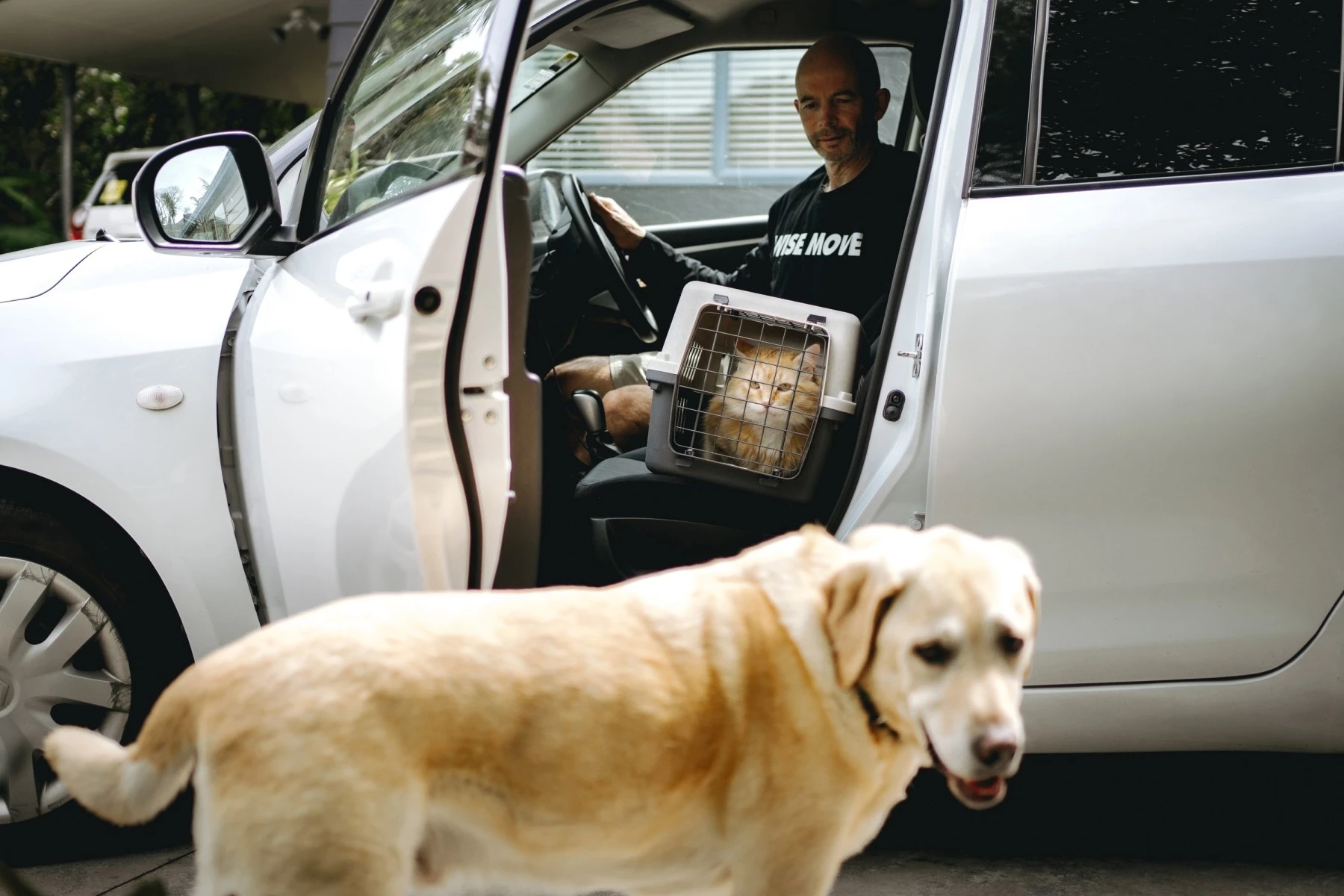
Moving can be a big deal for your furry friends. With so many changes, they might feel anxious, especially if it’s a long journey to Hamilton.
Pack your pet's essentials, including food, water, and their favourite blanket and toy. This will help settle them during the trip.
If your move is especially long or stressful, consider a pet transport service to keep your cat or dog comfy and safe. Wise Move makes it easy to find trusted pet movers you can rely on to move your pets safely.
Moving with kids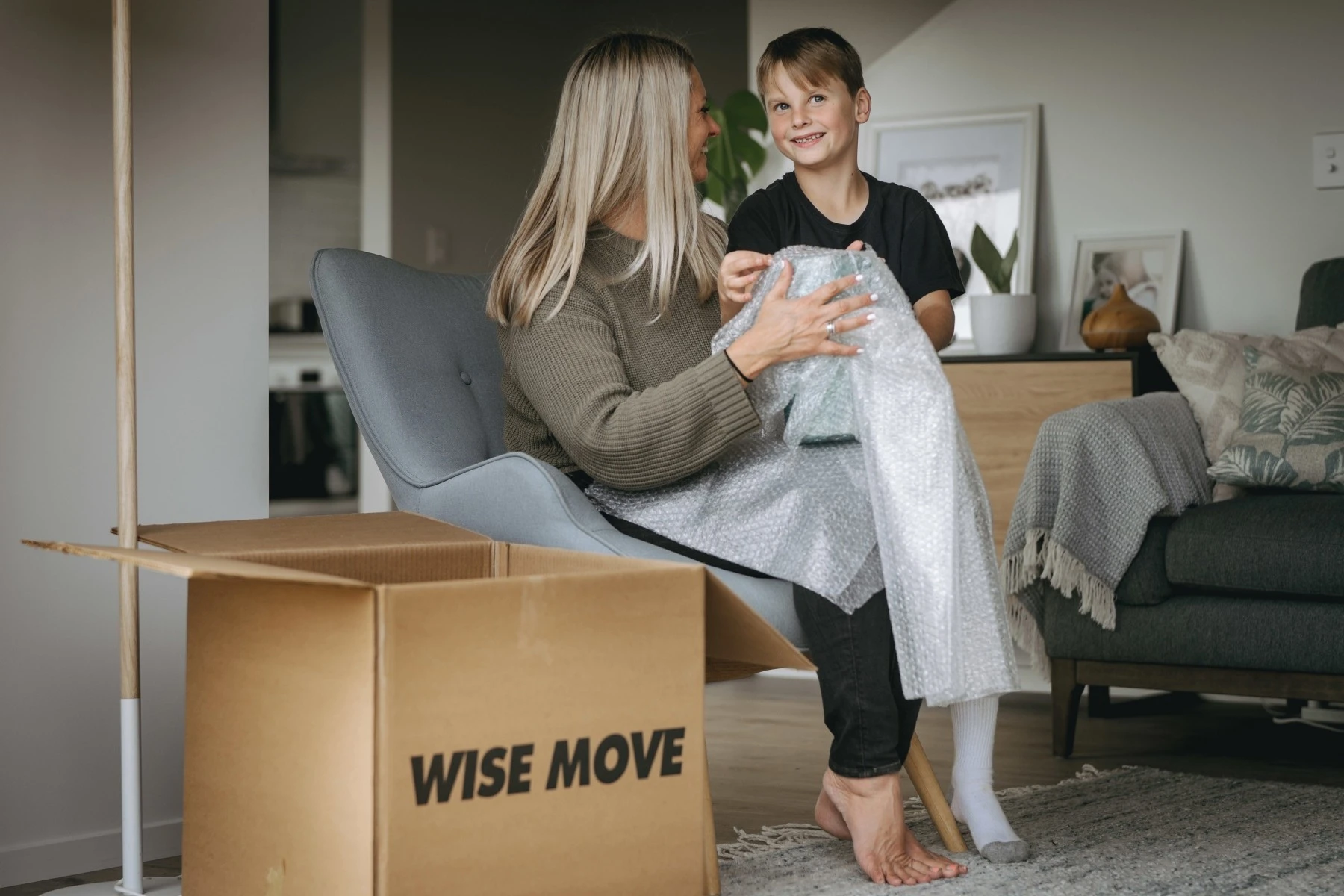
For kids, moving can be a rollercoaster of emotions. Involving them in the move can help settle their nerves and make them feel part of the process. Let them pack a special ‘moving day’ bag with their favourite things.
Packing toys, books, activities, and blankets will also ensure they are comfy and entertained in the car or during any stops. Once you’re in Hamilton, explore fun spots like Hamilton Gardens or the Waikato Museum to help them feel excited about their new home.
Moving with elderly relatives
Helping an elderly family member move takes a bit of extra planning, but it will take a lot of the stress out of their experience. Make sure you involve them in the move. Ask them about their mobility needs and help them pack essential items like medications so they’re accessible during the trip.
If the move is a big one, travelling with them can provide extra support. And once you're in Hamilton, it’s a great idea to scope out nearby healthcare facilities and community services to help them settle in comfortably.
Moving with a disability
If you have specific moving accessibility needs, planning and preparation can make moving day easier. Keep medications, assistive devices, and must-have items in a clearly labelled, easy-to-reach box.
Before you move, check that your new home has the needed accessibility features. Look for things like ramps, wider doorways, or step-free access.
Research available services in the area you are moving to in Hamilton. It’s worth looking up local support networks, medical facilities, and community resources, so you can hit the ground running after moving day.
Choosing a trusted Hamilton moving company
 Moving to Hamilton can be an exciting adventure. There’s also a lot to think about before you get there. From decluttering and packing to cleaning and selling items, moving can quickly become an overwhelming task.
Moving to Hamilton can be an exciting adventure. There’s also a lot to think about before you get there. From decluttering and packing to cleaning and selling items, moving can quickly become an overwhelming task.
At Wise Move, we make it easy to get quotes from trusted and affordable movers who can take the stress out of your big day. Whether you're shifting across Hamilton or from another city to the mighty Waikato, Wise Move connects you with a professional, affordable, and trustworthy Hamilton moving team.
What do our customers say?

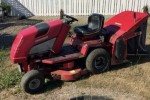

For every (wise)move
